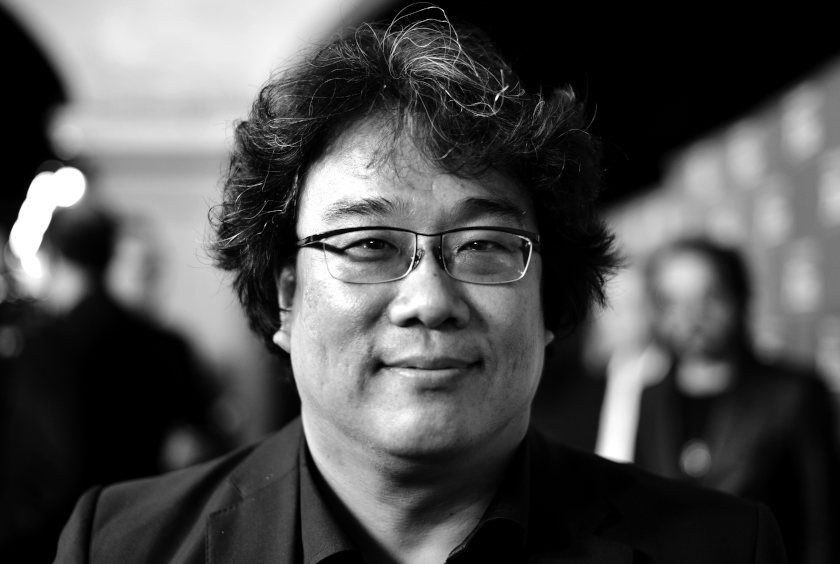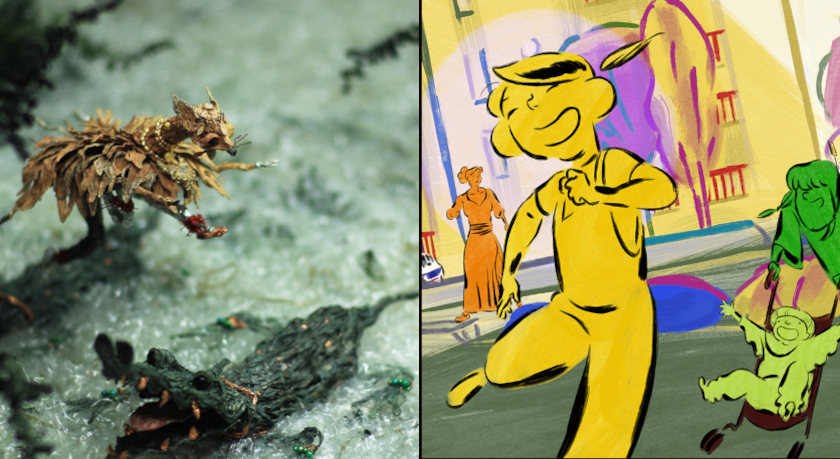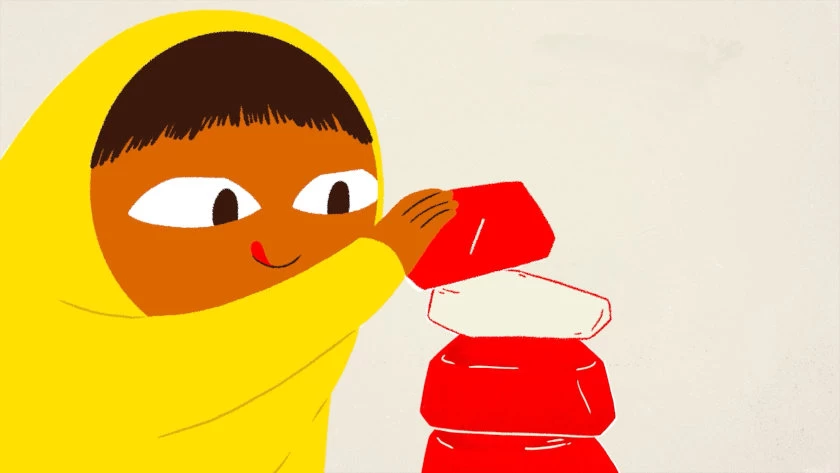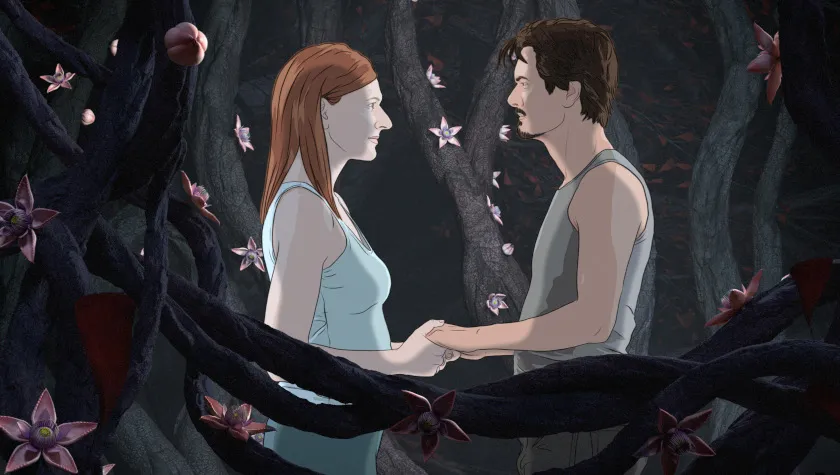Establishing Space: 'Circle' by Korean Animation Director Joung Yumi (Berlinale 2024 Interview)
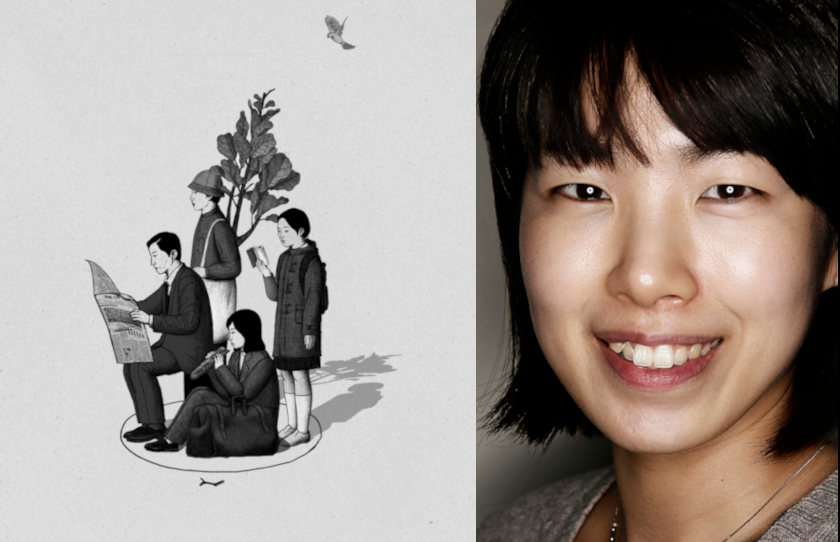
Korean animation director Joung Yumi has hit a record in her Berlinale Shorts appearances. Her new film, 'Circle', a 7-minute animation short on ideas and preconceived expectations circling one another (in the form of passersby accumulating themselves) marks her fourth appearance at the Berlin Film Festival -after 'Math Test' (2010), 'Love Games' (2013), and 'House of Existence' (2022).
Self-described as a film "'yearning for words of freedom beyond the barriers of a preconceived idea", this is not a circle but a step beyond for the Korean animation director and artist, who had her first success with 'Dust Kid' (2009, Directors' Fortnight, Cannes). The 2013 ritualistic 'Love Games' animation short followed and won the Grand Prix at the Animafest Zagreb this year.
Coming from a fine arts background -she studied both a Bachelor of Fine Arts and attended KAFA (Korean Academy of Film Arts) for animation directing - Joung Yumi and her storytelling device is simple but powerful. She talked to Zippy Frames about her new film, 'Circle'.
ZF: 'Circle' puts its characters in an enclosed space, similar to the one the main characters defined in 'Love Games' (it was a rectangle there). Why do you prefer enclosed space as a narrative and directorial way to initiate action in your films?
JY: I tend to always establish some sort of separate space when I work. I don't consciously do it. Unconsciously, I tend to set up a separate space at the beginning of a story and often choose to move out of that space when the story is over. I've realized that this unconsciously holds some significance. When I think about it, when I choose a story or decide on a topic, I tend to work with the concerns or questions I have at that time. When a story ends, I try to provide at least some hint of an answer to those questions and express some sort of transition. So, unconsciously, I tend to establish some sort of space that I can't quite move away from.
ZF: Relatedly, 'Circle' features 'strangers' in a very specifically set space (bus stop), like the immediately previous 'Waves' (2023) film. Was it your intention to make 'Circle' somehow related to 'Waves' or did such an idea never occur to you?
JY: In fact, there are similarities in the characters' actions or movements. There are scenes in both 'The Waves' and 'Circle' where characters simply walk and move, making them seem similar. However, these two works are not connected. I chose the most stereotypical character appearances because the stories in both 'The Waves' and 'Circle' are not limited to any specific age or gender, but rather tell universal stories. Just like in 'The Waves', I felt that the story in 'Circle' could apply to anyone universally, so I chose the same characters. Although each character may seem unique, I aimed for diversity in age, gender, etc., and since the characters in 'The Waves' were stereotypical types, I
thought it was fine for them to overlap.
ZF: Why are you fascinated so much by the B&W aesthetic in your films?
JY: When I started painting, I didn't necessarily choose black and white, but I started working with black and white visuals when making animation films. There were several considerations when choosing black and white for animation. First, working with a pencil is the most comfortable, effective, and least burdensome material for me. I prefer a more minimalistic black tone because if I want to adjust or change the scene or direction; having too much to handle can become cumbersome.

Second, I appreciate the emotional depth that black-and-white imagery offers. I enjoy representing objects or landscapes realistically in black and white because it often creates a slightly surreal effect beyond reality. There's a certain ambiguity in time that I perceive. While it may seem like a straightforward realistic depiction on the surface, I also feel that it serves as a metaphor or symbolism, which is why I find black and white effective. Additionally, the slightly uncomfortable and stubborn sentiment that black-and-white work evokes helps me immerse myself in films, which is why I seem to prefer it.
ZF: Was 'Circle' an easy film to make, creatively speaking? Or did you have perhaps worries or false starts? Perhaps scenes that didn't fit, characters that had to be excluded?
JY: To be honest, 'Circle' was probably the easiest work I've ever done so far. I made it in a quite comfortable manner because the story just felt natural to me. If I can't genuinely empathize with a story or if I'm not sure about it, I tend to question it more while working on it. However, 'Circle' felt so naturally metaphorical to me, even though it's very short. The format of the story was straightforward, making it easy to work with. So, it had the shortest production period compared to all my other works. But now, my concern is that because the story feels so obvious to me, I worry about how the audience will perceive it. I wonder if I should make it slightly more complex or thought-provoking, rather than just straightforward. That's why I feel a bit anxious when working on such a simple piece.
ZF: When you start a film, do you have a concept in your head that you have to follow closely up to the end? Or do you improvise in animation or even post-production?
JY: Firstly, it's important to be clear about what story to tell, so I start by determining how I want the ending to feel or the direction in which I want the story to lead. However, the methods of expression are constantly adjusted and modified along the way. I tend to change how I want to effectively or engagingly convey what I want to say.

ZF: Has your 2D animation technique changed from 'Dust Kid' to 'Circle'? Do you rely more or less on the computer?
JY: I've become more reliant on it. Because my Major is in fine arts, I chose a very analog-oriented field and I'm not very proficient with computers. (I still feel handicapped in that regard). When I was making 'Dust Kid', it was almost like my first animation project, and since my technical skills were lacking, I filled in many parts with very analog labor. Whereas in the past I used to express everything with hand-drawn pictures, now it's much harder to work that way, and I've developed some skills to do less animation. Mostly, after a certain point in the initial stages, I switched to a system where I did a lot of work on the computer.
ZF: Do you identify with the characters in your film? 'Dust Kid' looks like a personal film, and even 'Love Games'. But other films have multiple characters, and it's not easy to identify with
JY: I identify with them. It would be difficult for me to work without identifying with them. 'Dust Kid', with its focus on one protagonist, close-ups, zooms, and shots from their perspective, allows for a much more immersive portrayal of a single character, making it feel more personal to me. On the other hand, my recent works distance themselves with theatrical techniques like single-shot scenes, hence adopting a third-person perspective. So, they might appear less personal, but in reality, the actions, choices, and
dilemmas of the characters depicted are reflections of my own experiences. Therefore, while the method of expression may influence whether it appears more personal or objective, I approach both with equanimity.
ZF: What do you think about rituals in our social communication (from staying in line to lovemaking routines)? Are these necessary for us as social beings or a burden?
JY: Rituals are necessary. They're things that humans inevitably have to do over a long period to live together. So, there must be a reason behind their creation. However, to us, they might just seem like things that happen automatically within us, almost unconsciously. Rituals aren't necessarily truths; they're just something that arises out of necessity. But if they become too rigid, eventually we might find ourselves rigidly adhering to them without even knowing the reasons behind their establishment. So, I believe there needs to be some airing out, some ventilation, about why they are necessary and why they exist.
ZF: You are a regular Berlinale Shorts visitor, with your 'Love Games' (2013) and 'House of Existence' (2022) -and now with 'Circle' (2024). What does Berlinale mean to you regarding artistic acknowledgment and a place to be as a director? What do you expect to get in 2024?
JY: I don't work with the expectation or anticipation of being invited to film festivals. Because predicting film festival invitations is unpredictable, and I can't create work just to meet people's expectations. As someone who is working on their craft, I try to view my work objectively, but it's difficult.
However, receiving an invitation to the Berlin Film Festival is a reason for great joy because it makes me curious about how my work will be perceived by people - and I hope it will be well received. Simply being selected for such an important film festival and having my work screened there gives me a sense of communication and validation, which is very valuable. It also feels empowering to have achieved some objectivity in this work.

'Circle' by Joung Yumi world premieres at Berlinale Shorts, 15-25 February 2024.




